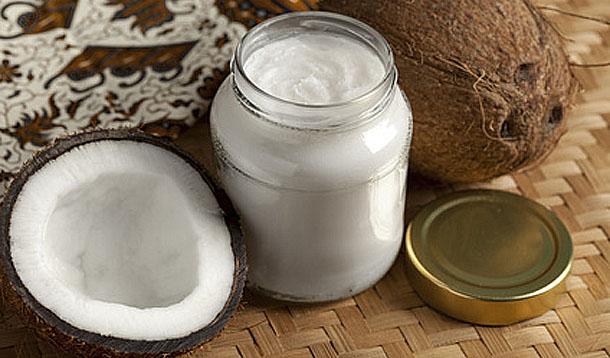
Depending on the type of dishes you have, marks like those in the image above are, over time, inevitable.
But thankfully, there is a way to restore your dishes, mugs, plates, and bowls back to their good-as-new state, and all it takes is two ingredients you already have in your kitchen.
Before I tell you how to do it, let me tell you why these marks happen and how you can help to avoid them.
![]() How To Make Stainless Steel Shine With Only One Natural Ingredient
How To Make Stainless Steel Shine With Only One Natural Ingredient
Metal marks happen when metal rubs against the surface of the dish. Simple as that. Metal utensils are the main culprit - forks, spoons and knives but it can happen with any metal object. The marks in the bowl above? Those happened while I was whisking a flax egg with a metal whisk for something I was about to bake.
Dishes have a smooth, shiny coating to protect them (and make them look nice!). Depending on the type of coating the manufacturer used, some are more resilient than others. For example, I have a set of dishes that are about 13 years old and they don't have a mark on them. The bowls in this post are about five years-old and have been prone to metal marks from the beginning. So quality, the manufacturing process the dishes went though, and wear and tear all play a role in if scuffing will happen and how bad they will be.
There are cleaners you can buy in stores to clean the metal scuffs but they contain ingredients that are not so eco-friendly or healthy for you. If you want a greener alternative, then this is the method for you.
Tips before you start


Each day when I pick my kids up from school, there is a car I walk by in the parking lot. At the beginning of the school year, it took me a few days to stop gawking and finally check to see what the make and model of that car was.
It was a Chevrolet Volt.

*Drool* (This picture is of the current 2015 Chevy Volt)
Being that it's called a "Volt" I figured it may be an electric car and I was right. The Volt is an electric vehicle but what makes it special is that it can also run on gasoline. Your choice. Having that choice makes it possible to travel long distances, something typical hybrid cars cannot do.
Chevrolet recently unveiled the 2016 version of the Volt at the North American International Auto Show (NAIAS) in Detroit last month:

Again, *Drool*
I'm still on the hunt for my next car and the clock is ticking. My current car is getting up there in years and mileage so before I totally run it into the ground, I'm being proactive by doing my research. Like when I had the chance to drive the 2015 Chevy Malibu for a few days. That was quite the experience and I learned a lot about the innovative things GM and Chevrolet are doing for the environment.
So let me tell you about the 2016 Volt (available in the second half of 2015) and what makes it special. Because believe me when I tell you, this car has so much more than just a pretty exterior. Chevy's tagline for the Volt is "Brains wrapped in Beauty" and I really can't think of a better way to describe this car. As you read above, I was initially drawn to it by its exterior but when I learned how it worked and how it is an excellent choice if you are looking to buy a car that is more eco-friendly that a regular car, the exterior paled in comparison. (But I still like the exterior a lot!)
![]() Even Your Car Hates Canadian Winters
Even Your Car Hates Canadian Winters
Truth be told, I did not know too much about how electric cars really worked before the Volt. If you aren't quite sure, take a look at this short video to learn what makes the Volt it tick and what makes it one of the greenest vehicles around:
Still have questions on how this car works? Click here to check out GM's FAQ page about the Volt.
Here are some highlights of the 2016 Volt:

But is it safe? This is of course one of the biggest questions we have when buying a new car and yes, GM has put a lot of thought and effort into making the Volt one of the safest vehicles around. The Volt has received a 5-Star overall New Car Assessment Program rating from the National Highway Traffic Safety Administration for the current model.
The 2016 Volt's safety features work with an all-new body structure to provide crash-avoidance and passenger protection capability. Some highlights include:
So there you have it. The latest car to be added to my "to consider" list. The 2016 Chevrolet Volt goes on sale in the second half of 2015. If you are going to make a new car purchase soon too, would you consider purchasing an electric car like the Volt?
All images © GM

Coconut oil - one of my favourite things - is such an amazing and versatile product. It has so many uses—from cooking and baking to cleaning to skin care.
One thing to note, you will come across different types of coconut oil in the store. I prefer to use coconut oil that is unrefined and non-deodorized so the coconut flavour and smell remains. If coconut flavour and smell is not your preference, then look for a deodorized version.
![]() How To Make Your Own Organic Coconut Body Butter
How To Make Your Own Organic Coconut Body Butter
Two brands I use and that fit all of my criteria for coconut oil are Nutiva and Carrington Farms.
Once you have bought your coconut oil, here are 25 things you can do with it:
This is the most obvious one - of course cooking with coconut oil is a great idea! Coconut oil has a high smoking point so it is a smart choice for high heat cooking. Try it when making sautés, stir fry's, pancakes, and even popcorn, to name a few things.
Coconut oil makes an excellent butter replacement when baking (I only use coconut oil when baking!). Learn how to switch out butter in your recipes for coconut oil.
When baking, skip the aerosol cooking sprays and butter. Grease your pans with coconut oil instead.
This one was a huge (and pleasant!) surprise for me. Who knew coconut oil could be used as a coffee creamer?
The delicious, crackly chocolate shell we all know and love to serve with ice cream can be easily made with just two ingredients. One of those ingredients is of course, coconut oil. Learn how to make your own vegan magic chocolate shell here.
Maintaining a cast iron pan needs to be done in a certain way. They can't be washed with soap, you can't soak them, and they need to be seasoned regularly to remain non-stick. This is how I season my cast iron pan with coconut oil to keep it in great condition.
Conditioning your wooden cutting boards and utensils, such as wooden spoons, will lengthen their life span. Rub a small amount of melted coconut oil over your cutting board and utensils, let it soak in for a few minutes, and wipe off any excess with a dry cloth.
I don't remember the last time I bought lotion because homemade coconut oil body butter is the only thing I use on my skin. It's non-greasy, smells great and only contains one ingredient. Learn how to make your own coconut body butter here.
Coconut oil also makes a great lip balm, it will moisturize and add shine at the same time. I use it as-is but you can try making a DIY coconut-based lip balm recipe.
A body scrub is a nice way to moisturize and exfoliate your skin in the shower and to give you sweet-smelling, soft skin. Mix half a cup of sea salt or sugar with a half cup of melted coconut oil. Place the mixture in a jar to solidify. If you prefer a more fragranced body scrub, here is an easy recipe for a naturally fragranced coconut lime body scrub.
Those of us with frizzy hair know that no amount of product will ever make our hair non-frizzy on extremely humid days. BUT, on days where humidity is not a big factor, rub a very small amount of coconut oil in your hands and rub it onto the problem spots (not too much, you don't want to make your hair greasy!) The oil will act as a moisture repellant.
Especially during the dry winter months, some of our scalps need a little TLC. Follow the steps here to treat your scalp for dryness, dandruff, and product buildup.
Ingrown hairs can be stubborn to fix. Try this quick trick to treat and get rid of them.
Rub a bit of coconut oil right onto the area you need to clean, rub gently, and rinse with warm water.
Oil pulling is a controversial topic. Some swear by it, some think it's just a silly fad. If you do decide to do it, coconut oil is the way to go. Learn how to oil pull here.
A friend of mine makes her own coconut oil based deodorant and swears by it. Learn how to make your own coconut oil based deodorant here.
No artificial fragrances or strange ingredients. Bonus, it won’t stain your sheets and towels like other oils will.
Dab a little coconut oil onto mosquito bites to soothe the itchiness and help the bite heal quickly.
Peanut butter and ice cubes are both common solutions to removing gum from places it does not belong. No need for any of those things when you have coconut oil. Apply a generous amount of coconut the oil directly to the hair and gum. Let it sit for a few minutes before slowly sliding the gum out of the hair.
No more need for smelly chemical polishes. Coconut oil along with some lemon juice can be used to polish your furniture. Follow this step-by-step to learn how to clean your furniture with coconut oil.
That annoying sticky residue left behind by stickers, price tags and product info stickers? Mix some coconut oil with a little baking soda, apply to the spot and let sit it sit for a few minutes. Rub off with an old toothbrush or a scouring pad and you will never know sticker residue was ever there.
Coconut oil can be used to clean and moisturize leather. Put a small amount of melted oil it on a soft cloth, wipe the leather down and follow up by wiping with a clean soft cloth to remove any excess. The oil will not only clean the leather, it will help moisturize and help to prevent cracking. This method also works for patent and faux leather.
Rust can creep up in places we least expect like scissors or knives. To remove rust from these spots, coat the rusty area with a layer of oil and let it sit for about an hour. After the hour has passed, wipe, rinse clean with warm water and dry.
To clean a stain or spot on carpet or any fabric, mix equal parts coconut oil and baking soda. Rub the mixture onto the stain and rub until the stain is gone.
Put some melted coconut oil onto a soft cloth and rub the squeaky hinge ensuring the hinge is fully covered with the oil. Test for squeaks and re-apply as needed.
Those were just 25 uses, there are many more! How do you use coconut oil?